The Type 053 was the staple of Chinese PLAN late cold war frigates. The extensive denomination type covers 8 different ship types which spanned almost 20 years, from the Type 053K Jiangdong class which were basically heavily modified soviet Riga class frigates. They were designed as air-defense frigates, armed with two twin HQ-61 SAM launchers. Both were retired from active service in the early 1990s and 531 Yingtan is now preserved in a museum in Qingdao. In all and comprising all 053 types, 59 ships were completed a remarkable achievement for China in the 1970-80s.
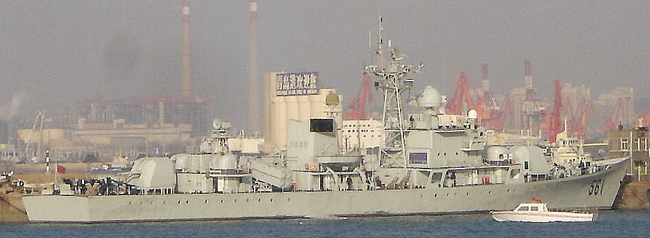
The Type 053H was studied in a context of total isolationism and defiance towards USSR as the west, during the Great Proletarian Cultural Revolution launched by the aging country leader, Mao Zedong in an atmosphere of unrest and paranoia. The purge also cleansed part of the army and navy, and the local development of warships dragged down so far that on completion in 1974, the Type 053H were hopelessly obsolete. However in time, the serie was constantly upgraded and also exported, while denominations changed, spawning for NATO a flurry of “variants” all under the same umbrella of NATO “Jianghu-class”.

Huainan, FFG 513.
Development of the Type 053H
In the 1970s, a wave a replacement was to strike the first generation Riga-type vessels of the PLAN, and a replacement program was launched at the 701 naval institute. It was called 053H (for “Hai”, anti-ship) and was to comprise Surface to surface SY-1 anti-ship missiles, two twin-missile box launchers, two single 100 mm guns, six twin 37mm guns, depth charges and short-range ASW rockets. The No. 701 Institute guided missile frigate anti-air/anti-ship concept latest until 1969, involved a diesel/oil engine. The concrete detailed engineering development phase was carried about by the Hutong shipyard, in close coordination with the navy staff. Construction started there, and was almost completed in the mid-70s. However in between, the primary mission was changed to pure anti-ship duties, as required by the PLAN at that stage. The whole weapon systems had to be changed with anti-ship warfare in mind, which delayed completion for years. The initially planned twin 100mm cannons were replaced by a more classic single-barreled 100mm cannon and by 1976, they were redesignated Type I anti-ship guided missile frigates.
Design of the “Jianghu” class
During the cold war (latter era), the Jianghu represented the most numerous class of warships in service with the PLAN. The emphasis was placed on SSM rather than SAM capabilities, but they carried still high-powered AA guns and search radar, while also operating depth charges. However the general design was still based on the Soviet 1950s Riga class, now in the late 1970s, totally obsolete. The stern was squared, the hull narrow and with a relatively low freeboard, going upwards two fold in a gradual curve (flush deck) to the bow. The design was still very “destroyer-like” with superstructure and funnels alternating with massive missile launchers, in the torpedo tubes banks fashion.
The armament was changed as said above due to PLAN’s policy swap to more aggressive naval operations and after the serie was built the 1980s saw a range of improvements. The final Type 53 Jianghu I had two dual 100 mm gun mounts and six twin 37 mm guns, plus missiles, four anti-ship SY-1s (Shangyou No.1) in two twin-box launchers. The two single 100mm were dual-purpose hand-loaded models with a fire control limited to a simple stereoscopic rangefinder, a ww2 solution which limited their use to surface targets calm weather an daylight operation. The six twin short-range 37 mm AA derived from the Soviet model were also locally controlled. The Chinese SJD-3 sonar was a development of early Soviet Tamir-11 (NATO Stag Hoof) mounted in a telescoping arm, and folded in the hull when not used. This system allowed it to be lowered several meter below the hull, increased detection range and reducing the parasite noises from the ship. ASW armament comprised short-range rockets like the Soviet RBU system, and depth charges. Damage control arrangements were minimal was discovered later by the Thai.
Improvements in the design started in 1983. The missiles were replaced by eight Yingji No.9 guided missiles and a simple combat-intelligence-command system was added as well as a new electronic warfare suite. This became the Type II guided missile frigate (NATO reported name Jianghu II). These ships have a hangar and helicopter; Then came the Jianghu III with twin dueal-purpose 100-mm gun turrets models. Their armament new comprised eight C-801/YJ-1 SSM while the Type 53HT-H Jianghu IV (Siping) was an ASW helicopter frigate in the same fashion Japanese ASW destroyers. The Type 53HT (Jianghu V) revealed the least expensive of the serie but also the least powerful variant, possibly intended for exports.
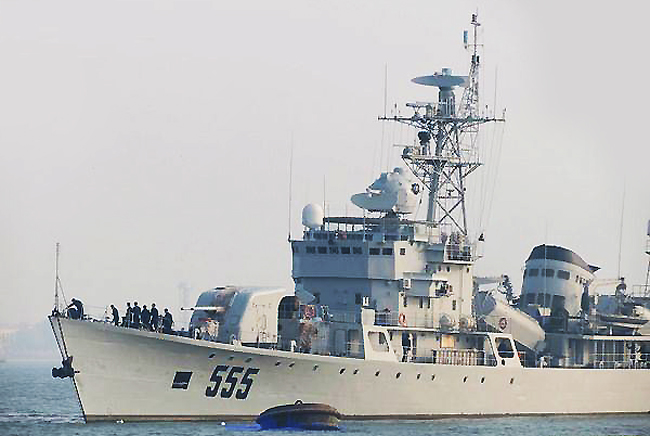
Type 053H1 NATO Jianghu-II
These Improved Type 053H had newer electronics, modernized turbines and new equipments. The sonar is now the SJD-5, a development of the Tamir-11 (MG-11) (NATO Stag Hoof), with transistors instead of vacuum tubes (as for the Soviet MG-11), armed with six SY-2 in two triple launchers, in place of the older systems. The #555 Zhaotong received more advanced electronics systems and was used as a prototyê, notably top test PL-9C SAMs which replaced its obsolete 37mm AA gun mounts.
Type 053H2 NATO Jianghu-III
These had an enlarged hull with strong European influence as the superstructure joined the freeboard in most of the front section. In fact their design was Considered as really modern for Chinese standards. These ships had airtight cabins and a modern central air conditioning system (indispensible for the south china sea), NBC protection and a brand-new Western-type integrated combat system derived from the British CTC-1629 and called locally ZKJ-3A. The sonar was upgraded to the EH-5 model derived from the SJD-5, with integrated circuits. The main armament was two four launcher for the SSN YJ-8/ YJ-82 plus four modern twin Type 79A 100mm guns, automated. These three frigates were quite a leap forward and were still in service with the East Sea Fleet in 1997. One has been since 2006 transferred to the North Chinese fleet and the two remaining sold to bangladesh.
Type 053H1Q NATO Jianghu-IV
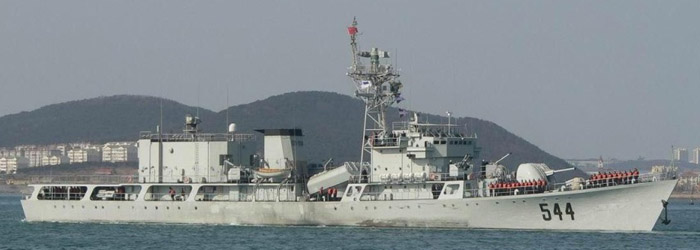
The rear (aft) weapons systems were entirely replaced by an helicopter deck and hangar, operating a for Harbin Z-9 helicopter (a copy of the airbus Helicopters Dolphin). The SSN armament was therefore reduced to a single SY-1 SSM twin-box launcher. t the front was installed a compact French-type automatic 100 mm DP gun. #544 Siping would remain a test bed of an helicopter frigate with the North Sea Fleet. She was renamed Lushun in July 2010 and now is part of the Naval Academy.
Type 053H1G NATO Jianghu-V
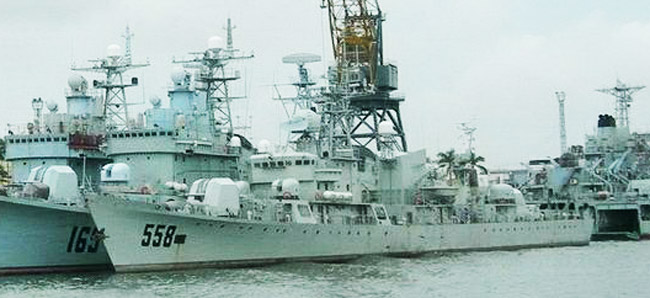
This was the “cheap” version of the 053, based on the 053H1 possibly for export. Six were completed at Huangpu Shipyard (Guangzhou) to provide ships by the South Sea Fleet rapidly. Improvements from the Type 053H2 were also present such as the air-tight cabins, air conditioning, NBC and integrated combat system plus EH-5A sonar. The latter was developed from the SJD-5/EH-5/Echo Type 5 but highly digitized. The six obsolescent SY-1A were upgraded to eight YJ-83 SSM in two four-box launchers, and this is their current configuration in active service. They would probably remain frontline until the 2030s.
Type 053H2G/H3 (NATO Jiangwei class)
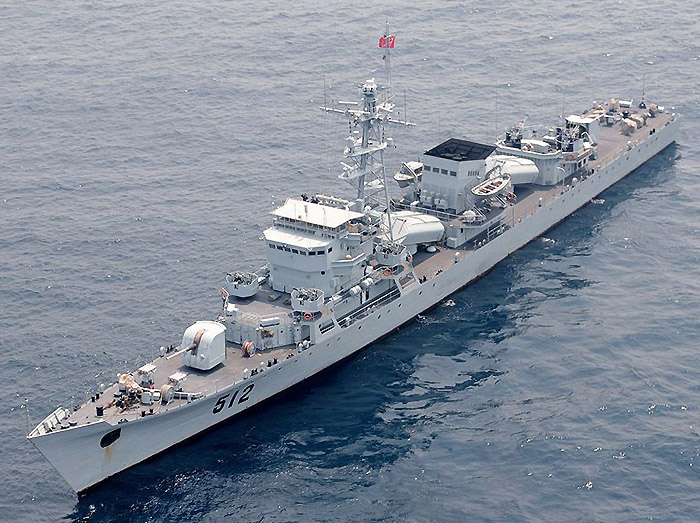
Huainan (540) Type 053H2G, NATO Jiangwei-I
Construction of the Type 053H
Type 053H (Hudong)
The first serie class by NATO Jianghu-I was immatriculated 516, named Jiujiang (九江). She was launched on 28 June 1975 and completed by 31 December 1975. Do note the completion time in barely five month. The next 515, 517, 511, 513, 512 and 514 (pennant numbers not linked to the launching chronology) were launched up to 11 February 1978, and commissioned in 25 January 1979, almost a year, a sign that teething problems of the first ships led to take more time polishing these details and the first one was dictated by a party schedule. These were East Sea Fleet. The second serie, identical and from the same yard, were the 518, 510 and 509 for the South see fleet (completion of the last in 30 September 1979) and two more in 1980. In between two ships (519 and 520) were for the North sea fleet.
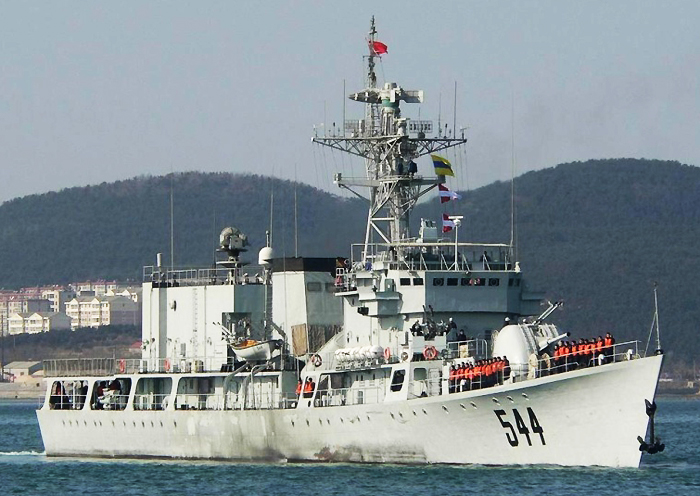
Type 053H1 (Hudong)
The first, Taizhou (台州), launched on 13 December 1981 and completed 30 June 1982, again a tight schedule. She was given the pennant number 533 and was joined by 534, for the East sea fleet, 543 and 545 for the North sea fleet, and 553-557 for the south sea fleet.
The last one, 557 was Jishou (吉首) was launched 8 November 1987 and commissioned on 15 June 1988, basically one year before the event that saw the end of USSR and the end of the cold war and before the Tiananmen Square event.
To complicate things, these frigates were at first named Type 6601 or Type 065 frigates, right during the turmoil of the cultural revolution. At first they were named after geographical areas but this was soon forbidden to avoid a “bourgeois” sense of belonging to their populations, and the third batch had to be unnamed and referred to by their hull number.
Then the naming returned and all ships are known under the generally accepted Type 053H serie, with hull numbers, pennant, and names.
Type 053H1Q-H2 (Hudong & Hangpu)
This was when the Type 053H1Q Siping (544) was completed in December 1985. She was renamed in 2010 Siping and serve in the North sea fleet.
The three 053H2 ships (535-537) Huangshi, Wuhu and Zhoushan were for the East sea fleet. The last one was commissioned on 17 November 1990 and renamed Cangzhou in 2006 while she was sent to the North sea fleet.
The next six Frigates of the 053H1G type were for the South and East sea fleets, and post-cold war vessels completed in 1993-1995 with the pennants 558-563. The great difference with previous batches is that they were built at Huangpu yard located in Guangzhou (Canton) in southern China.
The yard was more specialized in submarine hunters. Meanwhile at Hudong were launched the four ships of the Type 53H2G (NATO Jiangwei I) type which were so different hey will treated in a separate post.
Exports Type 053H
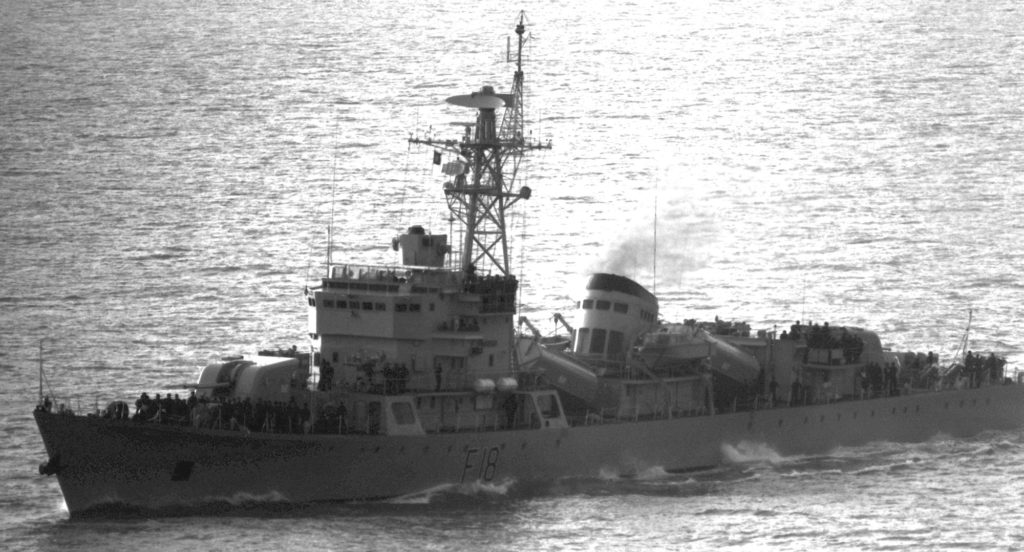
The Chinese soon exported the Type 053H and made variants for foreign navies, starting with one 053H1 for the Bangladesh Navy (transferred) and two other Type 053Hs purchased by the Egyptian Navy. They were refitted with Echo Type 5 sonars developed from Jianghu-III’s EH-5, which used the LSIC -large scale integration- system. They had issues with their stabilizers and air conditioning put a drain on their generators. Their 100 mm guns were still of the hand-loaded model without fire-control radar while the anti-ship missiles were still Chinese 1st gen. P-15 Termit copies. Yet the Burmese ships were acquired in 2013.

ANDAMAN SEA (Sept. 27, 2009) The Royal Thai Navy frigate HTMS Bangpakong (456), left, is underway with the aircraft carrier USS Ronald Reagan (CVN 76), the guided-missile cruiser USS Chancellorsville (CG 62) and the guided-missile destroyer USS Gridley (DDG 101). The Ronald Reagan Carrier Strike Group is on a routine deployment in the 7th Fleet area of responsibility. (U.S. Navy photo by Mass Communication Specialist 3rd Class Joshua Scott/Released)
Bangladesh:
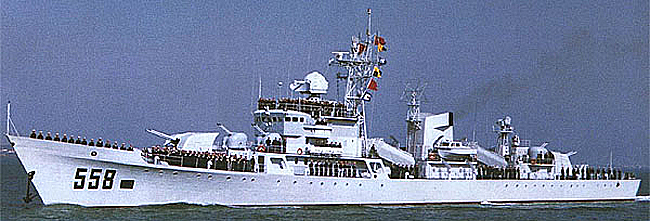
Three ships (556 of the H1 and 535-536 of the H2 type) were transferred to Bangladesh, the first in 1989 and the two others in 2013, renamed BNS Osman, Abu Bakr and Ali Haider.
Myanmar:
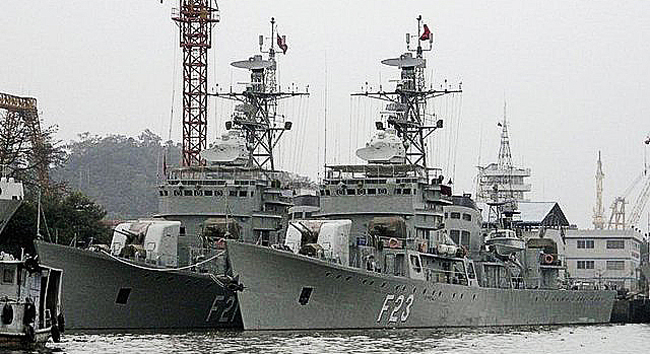
Two 053H1 ships from Hudong were sold to the Myanmar Navy. The first named F21 UMS Mahar Bandoola was PLAN’s 554 Anshun, decommissioned in March 2012 and sold to the Burmese, like The F23 UMS Mahar Thiha Thura (ex. 557 Jishou).
Type 053HE (Egyptian Navy)
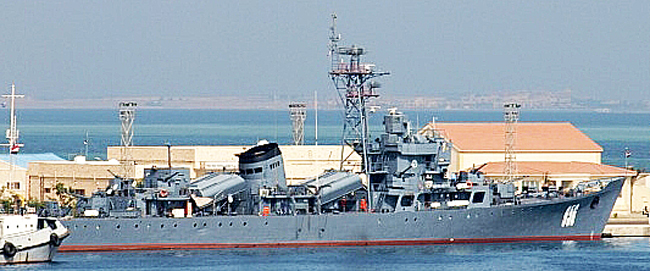
They were additional constructions, the 951 Najim al-Zafir and 956 Al-Nasser.
Type 053HT & HT(H) (Thai Navy)
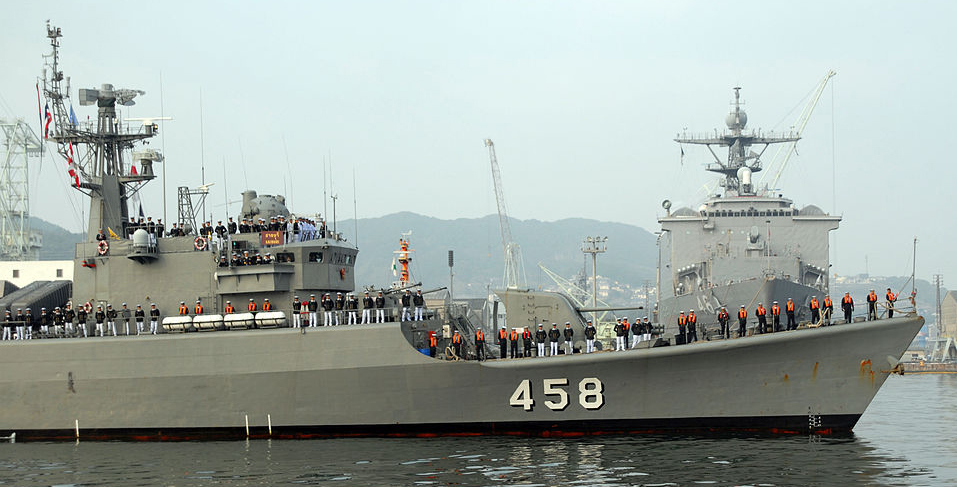
HTMS Saliburi FF-458
Four extra ships based on the PLAN’s H2 design, called 455 HTMS Chao Phraya, 456 HTMS Bangpakong, 457 HTMS Kraburi and 458 HTMS Saiburi. The last two were of the improved 053HT(H)) type, built in 1992 solely for export with an Helicopter deck (hence the ‘H’), and YJ-81 (C-801) missile launchers.
The Royal Thai Navy received four brand new, purpose-built Type 053Ts in the early-1990s at a ฿2 billion price tag each. They had a rear helicopter deck and hangar, SJD-5A sonar (based on the Echo Type 5 with VLSIC tech). However when acquired, the Thai had to proceed to considerable improvements: All the interior wirings were refurbished and protected, while fire-suppression system and water-tight locks had to be fixed and completed.
They represent half of the Frigate force, the two other being Types 025T partly built in Thailand, and two of the very large South-Korean design Gwanggaeto the Great-class destroyer HTMS Prasae and HTMS Bhumibol Adulyadej.
These early exports drew a lot of criticism and obliged the Chinese shipbuilding industry to improved matters, and the Thai enlarged Type 053s formed the basis for the F25T Naresuan class frigates. These F25T frigate were designed by Zhu Yingfu and from the start fitted with Western engines and armament, with the assistance of German technical advisers and French for the Sonars of the SO-7H type derived from the French DUBA25.

HD Artist’s Impression of the Type 053H1 Frigate -Jianghu I (Based on Conway’s profile)

Type 065H2 Frigate -Jianghu III (Conways)

Type 065H2 Frigate -Jianghu IV (Conways)
The Type 053 in service:
Fate of the ships
As indicated above, the ships in service with various PLAN regional fleets were in part transferred, some sold to foreign navies (the first being the 556 Xiangtan in 1989) others to other fleets, and sometimes renamed. The bulk of the first batch was decommissioned in 2012-2013 and one, 520 Kaifeng, ran aground on reef in 1985, was partially recovered, decommissioned in 1992 and scapped afterwards. Of the 14 ships of the Jianghu-I class, only six are still active:
*516 Jiujiang was converted into a fire support ship with MRLs in 2002. Se has been named Changsha until 1981.
*515 became a museum ship in 2013
*517 Nanping became a Chinese Naval Academy training ship in 2012
*513 Huai’an (Huaiyin until 2006) is now a training ship for the University of Naval Engineering
*509 and 510 were transferred to the PLAN’s Coast Guard as Patrol Ship #1002 and #1003
*519 Changzhi is now an active experiment platform
-Of the nine Jianghu II ships, six remained active. Three were sold and transferred renamed BNS Osman (F18), F21 UMS Mahar Bandoola and UMS Mahar Thiha Thura. Three ships were transferred to the South Sea Fleet.
-Of the three Jianghu-III, only 537 Cangzhou (Zhoushan up to 2006) is active, but was transferred to the North Sea Fleet. The two others were decommissioned in April 2013 to be transferred to the Bangladesh as BNS Abu Bakar (F15) and Ali Haider (F17).
-The unique Jianghu IV, 544 Siping had been renamed Lushun on 28 July 2010 and serves now in the Chinese Naval Academy.
-The six Jianghu-V type, completed in the mid-1990s, are frontline active in the East and South sea fleets.
The early variants of this obsolete frigate are nowadays primarily used for coastal patrols. They are retired from the frontline due to their crude control radars and obsolete missiles. The Jianghu-class are also devoid of any kind of centralized command information operation system of modern Frigates. So they are now considered as second-line defense ships at best.
While sources agree for 23 Jianghu I built, it is harder to asses for later Jianghu units due to numerous designations, names and pennant numbers changes from 1979.
Critics:
With time reports emerged of severe equipment problems. Faulty stabilizers, hungry air-conditioning systems, poor performances of the obsolete 100-mm guns and of the SSMs derived from the primitive Soviet ‘Styx’. Later on, more issues were revealed by exports, especially with the Thai Navy. Thailand purchased four ships on the stocks plus order two improved Jianghu IV. The Chinese-made F25T class made by the State Shipbuilding Corp in Shanghai (Taksin and Naresuan) releaved numerous defects while it was even worse for the four earlier Jianghu-class renamed Bang Pakong, Chao Phraya, Saiburi and Kraburi, purchased at “friendship prices” of 2,000 million baht each (The international average for this kind of ship was 8,000 million baht).
The quality of workmanship was severely criticized, and considerable rework done to meet standards, for battle damage and fire-suppression or hull breaching.
The Incident of Hasa Hasa (2012)
One of these Jianghu-V ship, 560 Dongguan, ran aground on a shoal off the coast of the Philippines on 11 July 2012 at Half Moon Shoal (Hasa Hasa), fortunately without casualties. These are the Spratly Islands, 60 miles west of Rizal, Palawan and a hotly contested area, now well known by the international press. In July she has been refloated and towed back to the nearest port for repairs. This happened just when territorial disputes in the South China Sea over Spratly Islands reached a peak, and the 2012 ASEAN summit in Phnom Penh took place at the same time.
In early 1999 indeed, China deployed tow Jianghu-class frigates to the Mischief Reef area (South China Sea) spotted also around Fiery Cross and Johnson atolls. The Phillipine government formally protested although their presence was allowed by international law in high seas, even in exclusive economic zone, and already protestation reupted for the same problem in November 1998. The Spratlys group of islands is still claimed in whole or in part by Malaysia, Vietnam, Taiwan, Brunei, the Philippines and China, and are the equivalent of the 1913 “Balkans powdercake” in Europe.
Read More
The Dragon’s Teeth: The Chinese People’s Liberation Army—Its History By Benjamin Lai
http://china-defense.blogspot.com/2012/07/jianghu-class-ffg560-in-news.html
https://en.wikipedia.org/wiki/Type_053_frigate#Versions
http://cmano-db.com/ship/168/
http://mail.dir.bg/~aeronews/Frigate.pdf
Conways’ all the world fighting ships 1947-1995
https://web.archive.org/web/20111005020054/http://www.atrinaflot.narod.ru/2_mainclassships/06_skr_50/0_50.htm



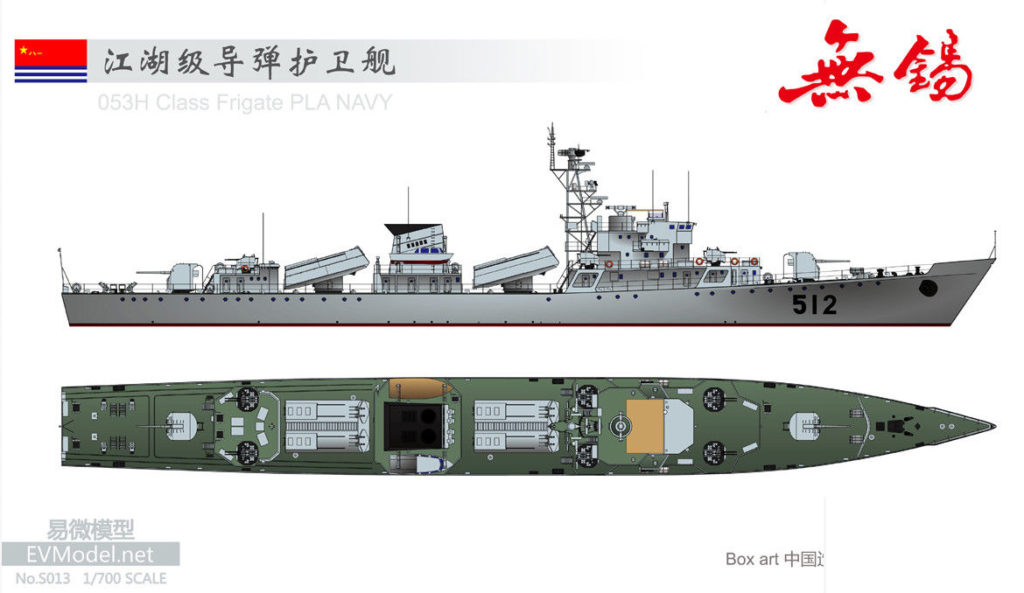
 Latest Facebook Entry -
Latest Facebook Entry -  X(Tweeter) Naval Encyclopedia's deck archive
X(Tweeter) Naval Encyclopedia's deck archive Instagram (@navalencyc)
Instagram (@navalencyc)





 French Navy
French Navy Royal Navy
Royal Navy Russian Navy
Russian Navy Armada Espanola
Armada Espanola Austrian Navy
Austrian Navy K.u.K. Kriegsmarine
K.u.K. Kriegsmarine Dansk Marine
Dansk Marine Nautiko Hellenon
Nautiko Hellenon Koninklije Marine 1870
Koninklije Marine 1870 Marinha do Brasil
Marinha do Brasil Osmanlı Donanması
Osmanlı Donanması Marina Do Peru
Marina Do Peru Marinha do Portugal
Marinha do Portugal Regia Marina 1870
Regia Marina 1870 Nihhon Kaigun 1870
Nihhon Kaigun 1870 Preußische Marine 1870
Preußische Marine 1870 Russkiy Flot 1870
Russkiy Flot 1870 Svenska marinen
Svenska marinen Søværnet
Søværnet Union Navy
Union Navy Confederate Navy
Confederate Navy Armada de Argentina
Armada de Argentina Imperial Chinese Navy
Imperial Chinese Navy Marinha do Portugal
Marinha do Portugal Mexico
Mexico Kaiserliche Marine
Kaiserliche Marine 1898 US Navy
1898 US Navy Sovietskiy Flot
Sovietskiy Flot Royal Canadian Navy
Royal Canadian Navy Royal Australian Navy
Royal Australian Navy RNZN Fleet
RNZN Fleet Chinese Navy 1937
Chinese Navy 1937 Kriegsmarine
Kriegsmarine Chilean Navy
Chilean Navy Danish Navy
Danish Navy Finnish Navy
Finnish Navy Hellenic Navy
Hellenic Navy Polish Navy
Polish Navy Romanian Navy
Romanian Navy Turkish Navy
Turkish Navy Royal Yugoslav Navy
Royal Yugoslav Navy Royal Thai Navy
Royal Thai Navy Minor Navies
Minor Navies Albania
Albania Austria
Austria Belgium
Belgium Columbia
Columbia Costa Rica
Costa Rica Cuba
Cuba Czechoslovakia
Czechoslovakia Dominican Republic
Dominican Republic Haiti
Haiti Hungary
Hungary Honduras
Honduras Estonia
Estonia Iceland
Iceland Eire
Eire Equador
Equador Iran
Iran Iraq
Iraq Latvia
Latvia Liberia
Liberia Lithuania
Lithuania Mandchukuo
Mandchukuo Morocco
Morocco Nicaragua
Nicaragua Persia
Persia San Salvador
San Salvador Sarawak
Sarawak Uruguay
Uruguay Venezuela
Venezuela Zanzibar
Zanzibar Warsaw Pact Navies
Warsaw Pact Navies Bulgaria
Bulgaria Hungary
Hungary

 Bundesmarine
Bundesmarine Dutch Navy
Dutch Navy Hellenic Navy
Hellenic Navy Marina Militare
Marina Militare Yugoslav Navy
Yugoslav Navy Chinese Navy
Chinese Navy Indian Navy
Indian Navy Indonesian Navy
Indonesian Navy JMSDF
JMSDF North Korean Navy
North Korean Navy Pakistani Navy
Pakistani Navy Philippines Navy
Philippines Navy ROKN
ROKN Rep. of Singapore Navy
Rep. of Singapore Navy Taiwanese Navy
Taiwanese Navy IDF Navy
IDF Navy Saudi Navy
Saudi Navy Royal New Zealand Navy
Royal New Zealand Navy Egyptian Navy
Egyptian Navy South African Navy
South African Navy






























 Ukrainian Navy
Ukrainian Navy dbodesign
dbodesign